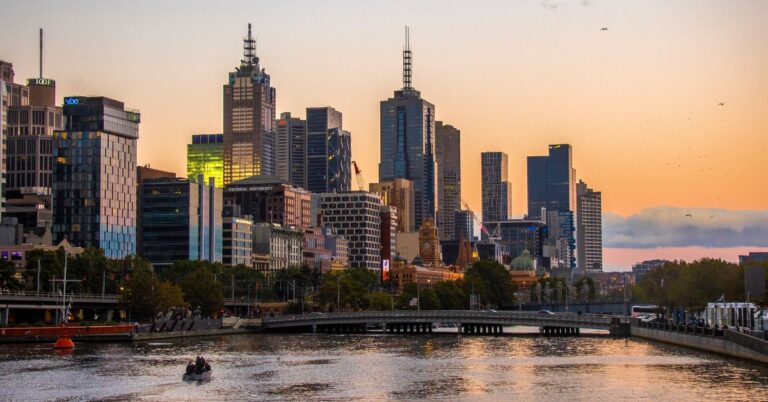Starting a construction or renovation project in Melbourne? Before you pick up a hammer or lay a brick, there’s one critical step — getting council approval. Whether you’re building a new home, adding an extension, or renovating an existing property, you must follow your local council’s planning and regulatory approval process.
This guide explains how the council approval process works in Melbourne, the different types of permits required, how long it takes, and practical tips to make your application as smooth as possible.
1. What Is Council Approval in Melbourne?
Council approval is an official authorisation from your local council that ensures your building project meets zoning laws, planning regulations, and safety standards.
It’s designed to control land use, protect neighbourhood character, and ensure all developments comply with state and local building regulations.
Depending on your project, you may need one or both of the following:
- Planning Permit – focuses on land use, appearance, and neighbourhood impact
- Building Permit – ensures construction meets structural and safety standards
Both are often confused, but each serves a distinct purpose.
2. Do You Always Need Council Approval?
Not every project requires council approval. However, in Melbourne, most significant works do — especially when you’re altering structure, size, or land use.
You will likely need council approval if you plan to:
- Build a new home or granny flat
- Add an extension or second storey
- Make structural changes to an existing property
- Subdivide land
- Install a swimming pool, garage, or large shed
- Change the property’s intended use (e.g. residential to commercial)
Minor cosmetic renovations like painting or replacing fixtures typically don’t need council approval.
3. Difference Between Planning and Building Permits
Planning Permit
A planning permit assesses how your project fits into the surrounding area. Councils consider elements like building height, setbacks, overshadowing, and design harmony with nearby properties.
It ensures your project meets the local planning scheme and zoning laws.
Building Permit
Once your planning permit (if required) is approved, you’ll need a building permit.
This ensures the actual construction work complies with the Building Act 1993, Building Regulations 2018, and National Construction Code (NCC).
A registered building surveyor issues this permit after reviewing your architectural drawings, engineering details, and energy efficiency reports.
4. Steps to Get Council Approval in Melbourne
The council approval process can be complex, but following the right steps helps avoid costly delays.
Step 1: Determine Permit Requirements
Before starting, confirm whether your project needs a planning permit, building permit, or both. You can check this through your local council’s planning department or a town planner.
Step 2: Prepare Your Documentation
You’ll need detailed plans and reports, which may include:
- Site and floor plans
- Elevations and cross-sections
- Title documents
- Energy rating reports
- Engineering drawings
- Bushfire or flood overlays (if applicable)
Accurate documentation helps councils process your application faster.
Step 3: Submit Your Application
Submit your application to your local council along with the required fees.
If a planning permit is needed first, it must be approved before applying for the building permit.
Step 4: Assessment and Review
The council reviews your application based on zoning rules, neighbourhood character, environmental factors, and public safety.
If objections are raised (for example, from neighbours), the process might take longer.
Step 5: Receive Approval or Feedback
If approved, your permit will outline conditions you must follow. If rejected, you’ll receive feedback explaining the reasons and how to modify your plans.
Step 6: Begin Construction
Once all permits are granted, you can legally start building — but ensure that any variations made during construction are reported to the council or surveyor.
5. How Long Does Council Approval Take?
The approval time varies depending on the project’s complexity and the council’s workload.
- Planning Permits: Typically 4–8 weeks (can extend to 3 months if objections arise)
- Building Permits: Usually processed within 2–4 weeks once documentation is complete
You can speed things up by providing complete, accurate information from the start.
6. Costs Involved in Council Approvals
Fees depend on project type, value, and council requirements.
Approximate costs include:
- Planning Permit Application: $200–$2,000 (depending on project value)
- Building Permit Fee: $1,000–$3,000
- Additional Reports/Consultants: $500–$2,500 (surveyor, energy report, soil test, etc.)
While these may seem like added expenses, they ensure your project meets all legal and safety requirements.
7. Common Reasons for Council Permit Delays
Many homeowners experience frustrating delays due to avoidable mistakes.
Typical reasons for delay include:
- Incomplete or inaccurate plans
- Missing supporting documents
- Neighbour objections
- Ignoring local overlays (e.g. heritage, flood, bushfire zones)
- Poor communication between builder, designer, and council
Working with a professional builder or town planner familiar with Melbourne’s approval process can prevent these issues.
8. Tips to Get Council Approval Faster
Here’s how to make your regulatory approval process smoother:
- Hire experienced professionals – Engage a registered builder, architect, or town planner early.
- Check zoning restrictions – Review your property’s zoning on the Victorian Planning Portal.
- Pre-application meeting – Book a pre-lodgement meeting with the council to clarify requirements.
- Respond quickly to requests – If the council asks for more information, provide it promptly.
- Keep neighbours informed – Transparency reduces objections and delays.
9. What Happens After Approval?
Once you receive your planning and building permits, you must display them on-site before construction starts.
You’ll also need to follow mandatory inspection stages, including footing, slab, frame, and final inspections.
After completion, your building surveyor will issue an Occupancy Permit or Certificate of Final Inspection, confirming the project meets safety and compliance standards.
10. What If My Application Is Rejected?
If your permit application is refused, don’t panic — you have options.
- Modify and resubmit: Adjust your design based on council feedback.
- Appeal to VCAT: The Victorian Civil and Administrative Tribunal handles planning disputes. You typically have 60 days from the decision to lodge an appeal.
A professional planner can guide you through this process and improve your chances of success.
11. Frequently Asked Questions
Q1: Do I need council approval for a small renovation?
Not always. Cosmetic changes like painting, flooring, or kitchen replacements generally don’t require approval. Structural changes do.
Q2: Can I build without a permit?
No. Building without the proper permit is illegal in Victoria and may lead to fines or demolition orders.
Q3: Who applies for the building permit — me or my builder?
Usually, your builder or architect prepares and submits the permit application, but as the owner, you must sign the approval form.
Q4: Can I start building while waiting for approval?
No. Construction can only begin once you receive official written approval from the council and building surveyor.
Q5: How long is my building permit valid?
Typically, a building permit remains valid for 12 months to start work and 24 months to complete it, though extensions can be requested.
12. Key Takeaways
- Council approval ensures your project complies with Melbourne’s local laws and safety standards.
- You may need both a planning permit and a building permit.
- Provide complete, accurate documentation to avoid delays.
- Always work with licensed professionals familiar with local approval requirements.
13. Final Thoughts
Securing council approval for building in Melbourne might feel like a hurdle, but it’s a vital step that protects your investment and ensures a smooth, compliant build.
By understanding each stage — from application to approval — and working closely with your builder and local authorities, you’ll set your project up for success from the very beginning.
When in doubt, always consult with your local council or a registered building surveyor to make sure every step of your project meets Melbourne’s strict regulatory standards.
Suggested Schema Markup:
- Article Schema
- FAQ Schema
- HowTo Schema
Internal Link Suggestions:
- Building Process Melbourne
- Extension Approval Process Melbourne
- Building Inspection Melbourne
- Construction Timeline Melbourne




